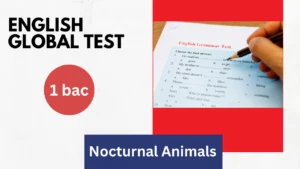
Introduction
Numbers are an integral part of our everyday lives, and the English language provides a rich and diverse system for expressing them. From counting objects to measuring time, numbers allow us to communicate and understand the world around us. In this lesson, “English Numbers: From One To Infinity“, we will explore the origins of numbers, their unique features, and practical applications.
English Numbers (From One To Infinity): Cardinal Numbers
The Foundation: One to Twelve
The counting system in English begins with the fundamental numbers from one to twelve. These numbers have their roots in ancient Indo-European languages and have remained relatively unchanged over time. They form the basis for our understanding of quantity and are used in various contexts, ranging from simple arithmetic to telling time.
“Teen Numbers”: Thirteen to Nineteen

Following the foundational numbers, come the “teen numbers”: from thirteen to nineteen. These numbers retain a unique pattern, with the suffix “-teen” added to the corresponding unit digit. While they may seem straightforward, they can sometimes cause confusion. This may be due to their irregularity in comparison to the rest of the counting system.
“-ty Numbers”: Twenty to Ninety-Nine
The “-ty” numbers in the English counting system are a fascinating group of numbers that represent the tens from twenty to ninety. These numbers follow a consistent pattern, with the unit digit combined with the base word “ty.” For instance, twenty is formed by combining the unit digit two with “ty,” creating a concise and easily recognizable term. As we progress through the tens, the “-ty” pattern continues, creating a smooth and systematic counting system. The “-ty numbers” provide a foundation for understanding larger numbers and serve as building blocks in our numerical communication.
Hundreds, Thousands, and Beyond
English numbers extend beyond the two-digit pattern into larger quantities. By combining hundreds, thousands, and beyond, we can express even greater magnitudes. For instance, two hundred is formed by combining the number two with the word “hundred.” This pattern continues with thousands, millions, billions, and so on, allowing us to articulate immense quantities with ease.
English Numbers (From One To Infinity): Ordinal Numbers

In addition to cardinal numbers used for counting, English also employs ordinal numbers to denote position or order. They serve an essential role in our language and we use them to describe the sequence of items or events. These numbers follow specific patterns in their formation. While some follow a regular pattern by adding the suffix “-th” to the cardinal number (e.g., fifth, eighth, twelfth), others have irregular forms that require memorization (e.g., first, second, third).
Practical Applications: Time, Measurements, and Mathematics
English numbers find practical applications in various aspects of life, from telling time and measuring distances to performing mathematical calculations. They play a crucial role in our day-to-day activities. They allow us to schedule appointments, follow recipes, calculate finances, and navigate the world around us.
Conclusion
English numbers form the backbone of our numerical communication. They enable us to express quantity, order, and magnitude. Understanding the patterns, rules, and practical applications of English numbers empowers us to communicate effectively, navigate our world, and appreciate the beauty and versatility of numerical expression.






